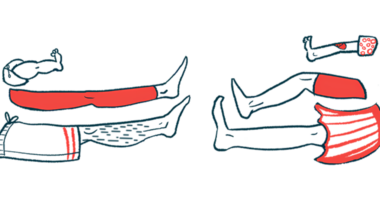Common Scale of Motor Symptom Severity May Have Flaws: Study

A commonly used measure of how motor symptoms are affecting daily life could also — for people in early stages of Parkinson’s disease — be taking into account the contribution of their non-motor symptoms, a study suggests.
This is a likely reason for the discrepancies seen in evaluations made by patients and those done by clinicians using this scale, called the Movement Disorder Society Unified Parkinson’s Disease Rating Scale or MDS-UPDRS, its researchers noted.
The multi-part scale includes a questionnaire for patients to report how strongly motor limitations affect their daily life activities (part II) and a doctor’s assessment of the same (part III).
As the MDS-UPDRS is the most common tool used to assess Parkinson’s disability, the differences seen in this study “must be considered when using self-reported rating scales such as MDS-UPDRS II in clinical research,” the team wrote.
The study, “Self-Report versus Clinician Examination in Early Parkinson’s Disease,” was published in the journal Movement Disorders.
Decisions to initiate treatment for Parkinson’s symptoms are also based on patient-reported symptoms and a clinician’s examination using this scale.
Part II in the MDS-UPDRS has 13 items while part III covers 33 items. Each item is ranked from a scale of zero to five, with higher scores indicating a more severe impact. The MDS-UPDRS II score ranges from 0 to 52, and MDS-UPDRS III ranges from 0 to 132.
Given its extensive use, a team led by researchers in Canada, along with colleagues at Roche, investigated the relationship between MDS-UPDRS parts II and III.
Specifically, the researchers aimed to assess if discrepancies exist, and to what extent patient-reported and physician-reported measures differ.
“Because both parts are intended to assess aspects of motor impairment in PD [Parkinson’s disease], one would expect a close relationship between these subscales. However, it has previously been shown that self-reported measures may be associated with comorbid conditions such as anxiety, depression, or cognitive deficits,” the researchers wrote.
The team analyzed MDS-UPDRS data from Parkinson’s patients in early stages who participated in the Parkinson’s Progression Marker Initiative (PPMI), an observational study assessing the natural history of the disease, and the Phase II PASADENA trial (NCT03100149).
Sponsored by Roche, PASADENA is evaluating the effectiveness of prasinezumab (PRX002/RG7935), an antibody against the alpha-synuclein protein. Toxic accumulation of misfolded forms of the alpha-synuclein are a hallmark of Parkinson’s.
The analysis included 420 patients with the PPMI study (mean age of 61.6; 65.7% men) and 316 patients (mean age of 59.9; 67.4% men) enrolled in the PASADENA trial.
Patients were categorized as low, intermediate, or high self-reporters. The low group covered those whose ratings were lower than clinician ratings, while scores for high group patients were relatively higher than those given by clinicians. Patients in-between these two categories were considered intermediate self-reporters.
In total, 183 patients were categorized as low self-reporters (103 from PPMI and 80 from PASADENA), 371 were intermediate self-reporters (214 from PPMI and 157 from PASADENA), and 182 as high self-reporters (103 from PPMI and 79 from PASADENA).
Across these patients (both PPMI and PASADENA), those in the high group reported more non-motor symptoms and associated difficulties in daily life than did those in the low and intermediate groups.
Problems with anxiety, depression, somnolence, sleep behavior disorders, and nervous system symptoms were more frequently reported by patients in the high group.
Doctors evaluations and biomarker measures of these patients, however, were more likely to differ.
“When compared to clinician-examined ratings, point estimates tended to go in the opposite direction,” the researchers wrote, “such that high self-reporters tended to have less severe clinician-examined objective signs than low self-reporters and vice versa. Scores of intermediate self-reporters were in the intermediate range on most measures.
“The results were consistent across variables and showed similar patterns in both PPMI and PASADENA populations,” they added.
These findings suggest that MDS-UPDRS part II, which should assess only the impact of motor symptoms on daily life, is likely not phrased and understood by patients as such.
“If MDS-UPDRS part II has stronger correlations with nonmotor symptoms than with motor symptoms, then it may not only be measuring what it was designed to measure,” the researchers wrote.
Another contributing factor, based on this and other studies, is the tendency for patients with a higher burden of nonmotor symptoms, such as anxiety and depression, to self-report more severe motor symptoms.
Their “self-reported motor-related impairments reflect not only motor signs/symptoms but also other self-reported nonmotor measures,” the study noted.
Because MDS-UPDRS scores can determine a patient’s treatment and response to it over time, both in clinical practice and trials, “our findings suggest further investigation [is needed] into the suitability of MDS-UPDRS II to assess motor-related impairments,” the researchers concluded.
Clinical trials are potentially at greatest risk of “bias” due to disparities in ratings, they added, because trials lack the “individualized evaluation” given over time by a patient’s regular physician.







